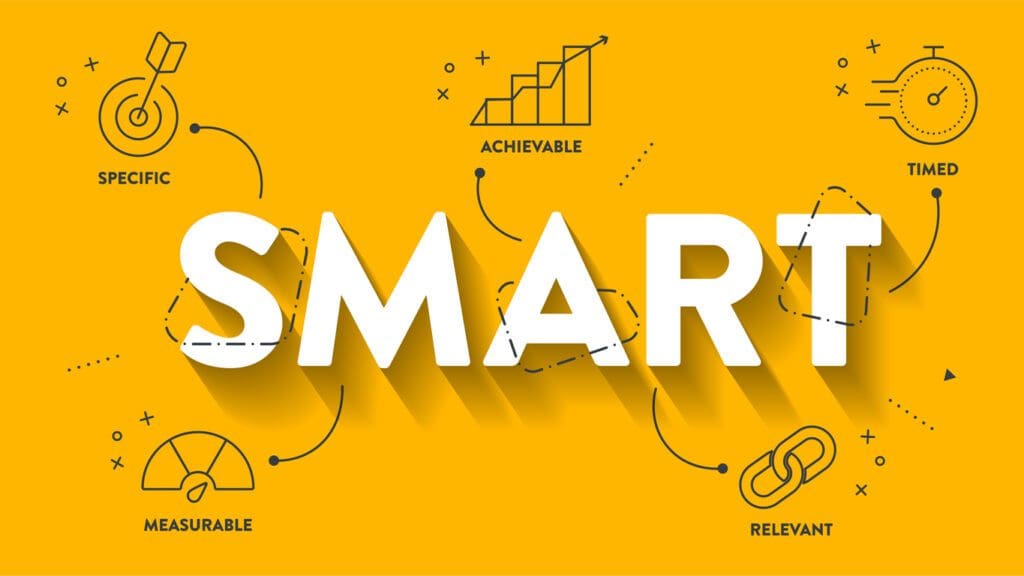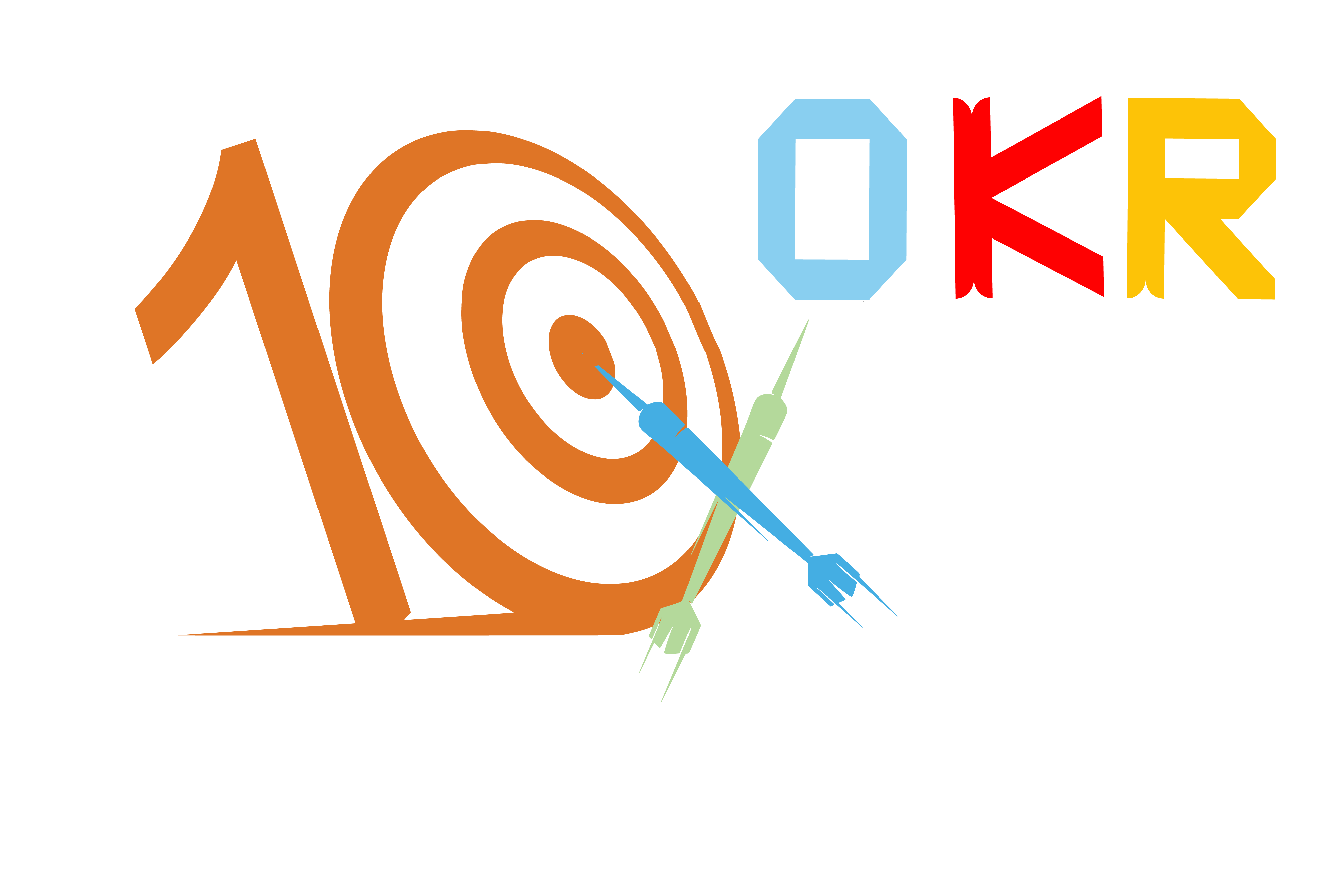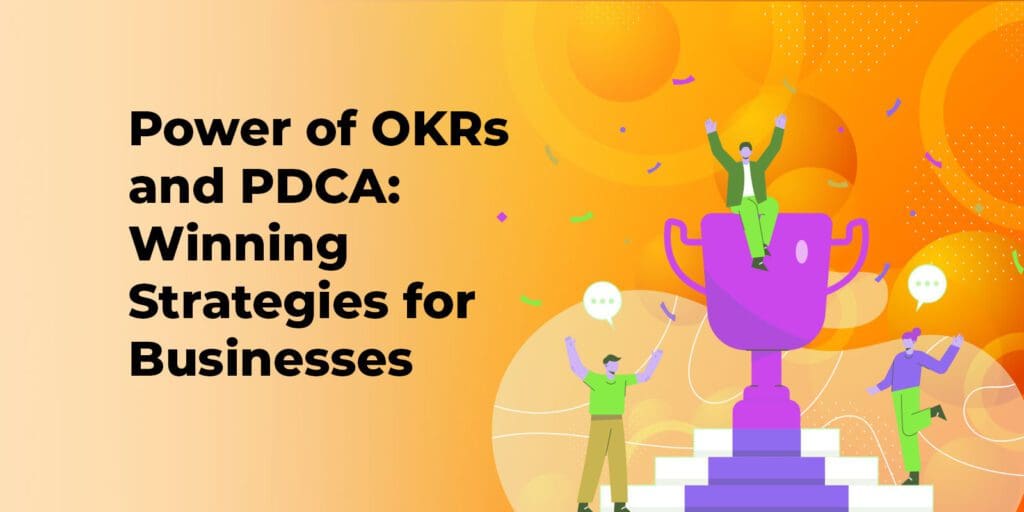Table of Contents
What You Need to Know About Strategic V/S Tactical OKRs.
In the fast-paced business world, it is essential to have strategies that can keep up with the ever-changing market. Organisations are increasingly adopting new management tools to achieve their objectives. Two of the most popular management practices are OKRs and PDCA. This article will explore how OKRs and PDCA work together and how they can be used to achieve business growth.
Introduction to OKRs and PDCA
OKRs and PDCA are different management frameworks that can be used together to achieve business objectives. OKRs represent Objectives and Key Results, while PDCA stands for Plan Do Check Act. OKRs are designed to set specific, measurable goals, whereas PDCA is used to improve the organisation’s processes continuously. OKRs and PDCA have unique features, but when used together, they become powerful tools for business growth.
What is OKRs (Objectives and Key Results)?
OKRs are an effective way of setting specific, measurable goals. OKRs consist of two parts: Objectives and Key Results. Objectives are concise, straightforward statements of what the organisation hopes to accomplish. Key Results are the specific, measurable outcomes that the organisation expects to achieve. OKRs aim to set challenging goals that motivate and inspire employees to achieve more than they think possible.
What is PDCA (Plan Do Check Act)?
PDCA is a continuous improvement cycle involving: Plan, Do, Check, and Act.
- Plan: Identify problem, develop solution.
- Do: Implement plan.
- Check: Track, assess outcomes.
- Act: Adjust plan based on evaluation.


What is the difference between OKR & PDCA?
| OKR (Objectives and Key Results) | PDCA (Plan-Do-Check-Act) | |
| Purpose and Focus | Goal-setting and performance management | Problem-solving and continuous improvement |
| Structure | Objectives and Key Results | Four-stage iterative process (Plan-Do-Check-Act) |
| Methodology | Setting specific objectives and measurable key results | Iterative problem-solving and improvement cycle |
| Application | Used in organizations to align efforts and drive performance | Applied in any domain or context for improvement |
| Scope | Widely applied at organizational and individual levels | Applicable to specific issues or challenges |
| Time Frame | Typically set for a specific period, e.g., quarterly | Cyclic process that can be repeated continuously |
| Primary Focus | Driving progress, innovation, and growth | Achieving incremental improvements |
| Alignment | Aligns individual, team, and organizational objectives | Focuses on addressing specific issues or challenges |
| Transparency | Promotes transparency and accountability | Enhances visibility and learning from actions |
How do OKRs and PDCA work together?
An organisation can define its overarching goals using OKRs and divide them into smaller, more achievable tasks using PDCA. This allows organisations to clearly define their objectives and strategies for achieving them.
The benefits of using OKRs and PDCA in business growth
The benefits of using OKRs and PDCA in business growth are numerous. OKRs provide the organisation with specific, measurable goals, which help to motivate and inspire employees. PDCA provides the organisation with a cycle of continuous improvement, which helps to improve the organisation’s processes. When used together, OKRs and PDCA create a powerful tool for achieving business objectives. This may result in greater earnings, higher client satisfaction, and happier staff members.
Examples of successful companies using OKRs and PDCA
Several successful companies have used OKRs and PDCA to achieve business growth. One such company is Google. Google uses OKRs to set specific, measurable goals for its employees. Google also uses PDCA to improve its processes continuously. Another successful company that uses OKRs and PDCA is Intel. Intel uses OKRs to set specific, measurable goals for its employees. Intel also uses PDCA to improve its manufacturing processes.
Steps to create effective OKRs and PDCA cycle stretch goals
Creating effective OKRs and PDCA cycle stretch goals requires careful planning and execution. The following are the steps to develop effective OKRs & PDCS cycle stretch goals:
- Identify specific goals that the organisation wants to achieve.
- Develop a plan to achieve those goals. The plan should be specific, measurable, achievable, realistic, and time-bound.
- Execute the plan.
- Monitor and evaluate the results of the plan.
- Make changes to the plan based on the evaluation results.
The importance of team members in achieving OKRs and PDCA goals
Team members are an essential part of achieving OKRs and PDCA goals. Team members need to understand the organisation’s goals and objectives. Team members also need to understand their specific roles in achieving those goals. They must have the necessary skills and knowledge to achieve the organisation’s objectives. Team members must also be motivated and inspired to achieve the organisation’s goals.
OKRs and PDCA in the Lean Startup method and management
The Lean Startup method and management are two different approaches to business management. The Lean Startup method involves developing a product or service that meets the market’s needs. The Lean Startup management approach uses OKRs and PDCA to achieve business growth.
Smart goals and wrapping it up in one agile management practice
Smart goals are specific, measurable, achievable, realistic, and time-bound goals. Smart goals are an essential part of achieving business objectives. Wrapping it up in one agile management practice involves using OKRs and PDCA to achieve business growth.


Conclusion
In conclusion, the power of OKRs and PDCA for business growth cannot be overstated. OKRs, or Objectives and Key Results, are an effective means of establishing and accomplishing objectives within an organisation. Teams can coordinate their efforts towards a shared objective and monitor their progress towards success by setting clear objectives and quantifiable key results.
PDCA, or Plan-Do-Check-Act, is a cyclical model for continuous improvement that encourages businesses to evaluate and improve their processes constantly. By using PDCA in conjunction with OKRs, businesses can ensure that they are achieving their goals and continually improving their operations to maximise efficiency and effectiveness.
OKRs and PDCA can create a culture of accountability, collaboration, and continuous improvement within an organisation, leading to sustained business growth over time. Therefore, businesses must adopt these powerful tools and integrate them into their strategic planning process to achieve long-term success.
Sign up for free to execute your goal-planning strategies starting today!
FAQs
What is the significance of combining OKR and PDCA frameworks?
By combining OKR and PDCA frameworks, organizations can achieve a comprehensive approach to strategic planning and execution.
How do OKRs and PDCA complement each other?
OKRs is for goal-setting and performance management, while PDCA aids in problem-solving and continuous improvement. Together, they ensure that goals are set ambitiously, progress is monitored, and adjustments are made for ongoing growth.
Can OKRs be integrated within the PDCA cycle?
Yes, OKRs can be integrated within the PDCA cycle. OKRs serve as the objectives to be achieved during the Plan stage of PDCA, and the key results become the measurable milestones to monitor progress and evaluate outcomes during the Check and Act stages.
How frequently should OKRs be reviewed and updated?
OKRs should be reviewed regularly, typically on a quarterly basis. This allows for tracking progress, assessing results, and making any necessary adjustments. However, the frequency of review and update can vary depending on the specific needs and context of the organization.
Can OKRs and PDCA be used by individuals as well as teams?
Yes, both OKRs and PDCA can be used by individuals and teams. OKRs can be set at different levels, from organizational objectives down to individual goals, ensuring alignment and accountability. PDCA can be applied to various projects or initiatives, providing a problem-solving and improvement framework for both individuals and teams.



